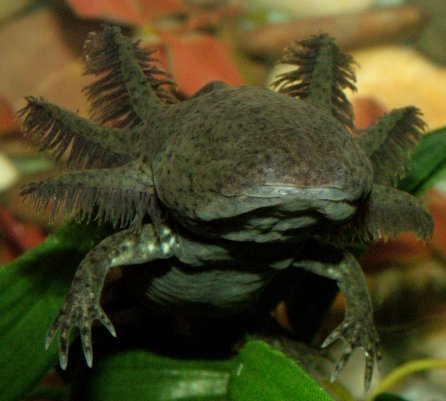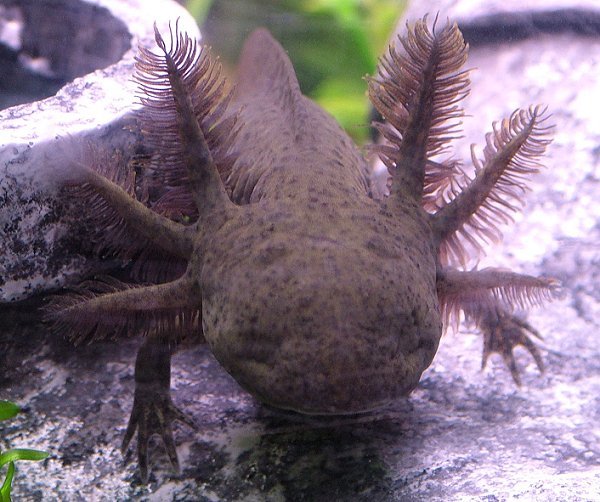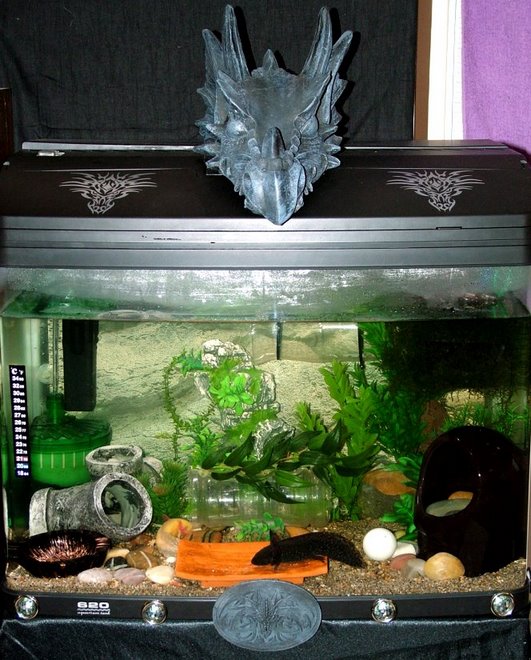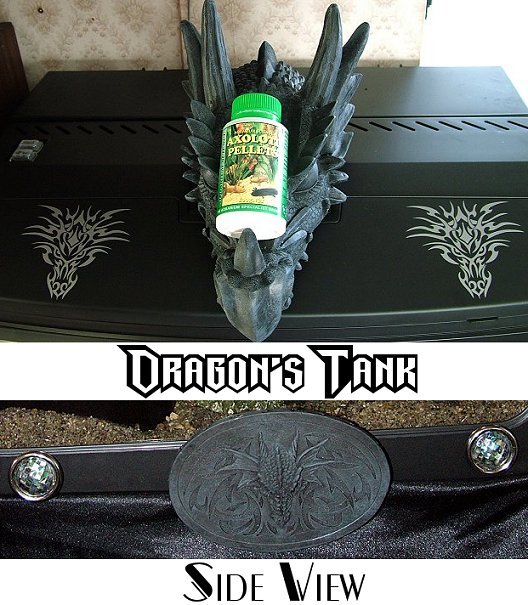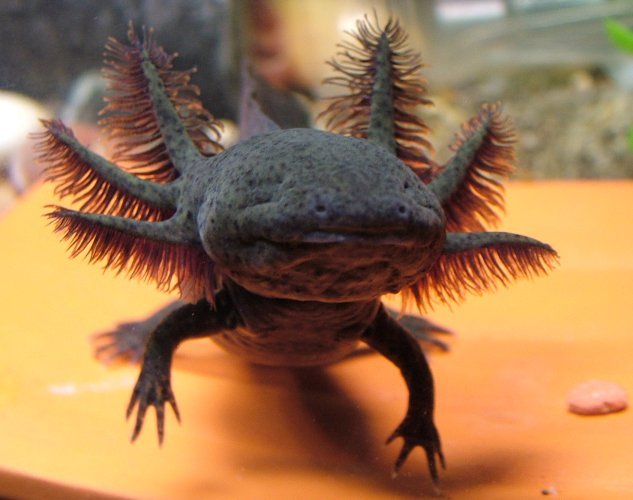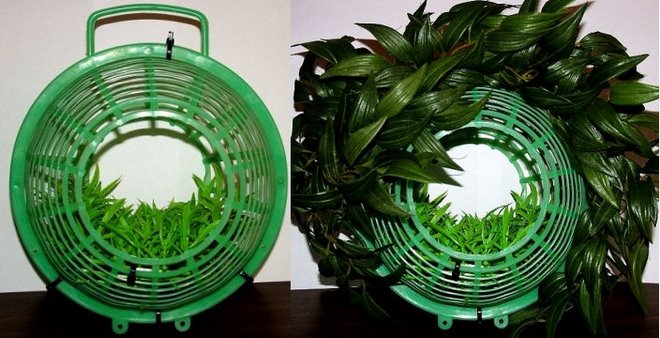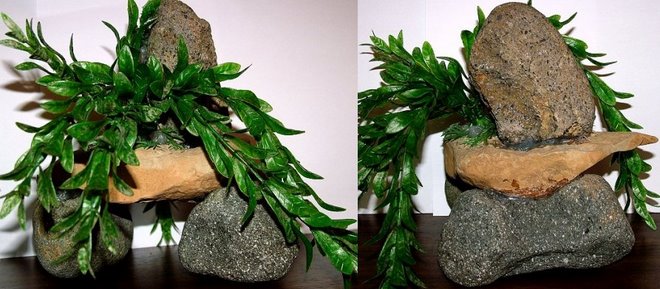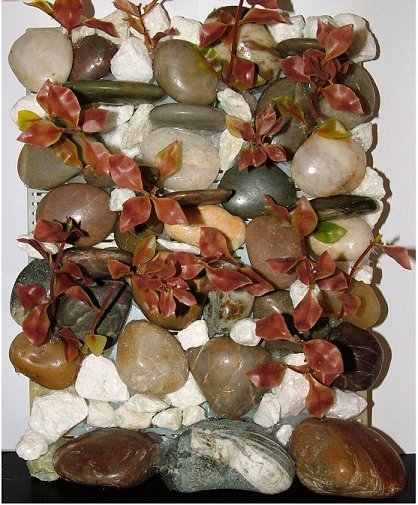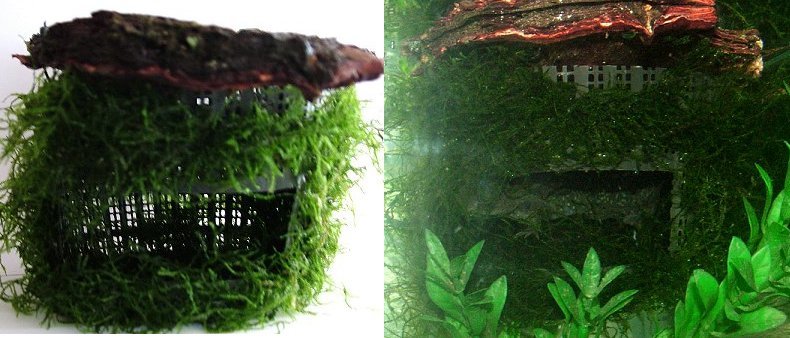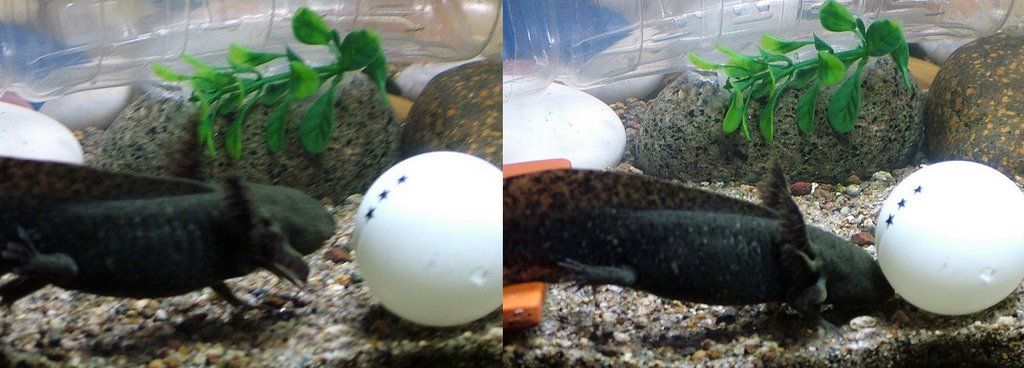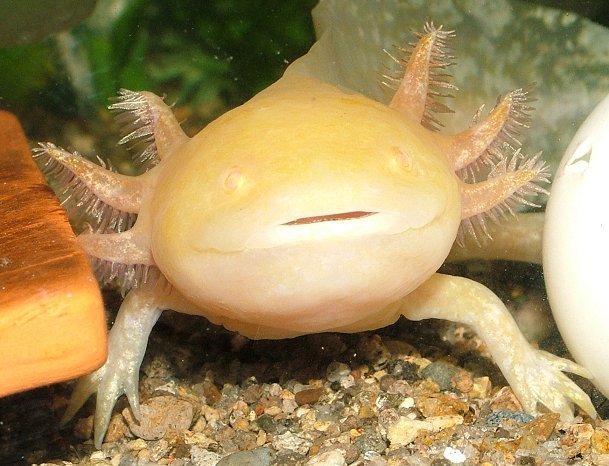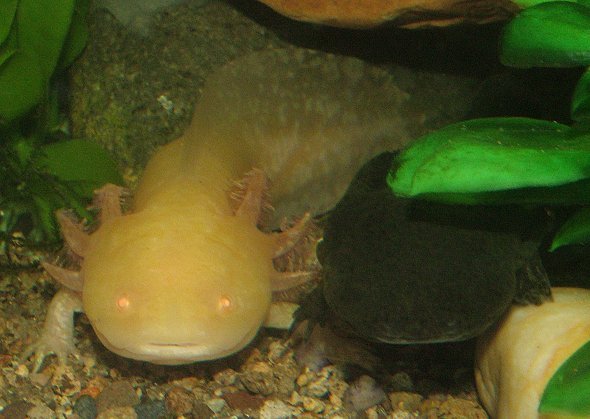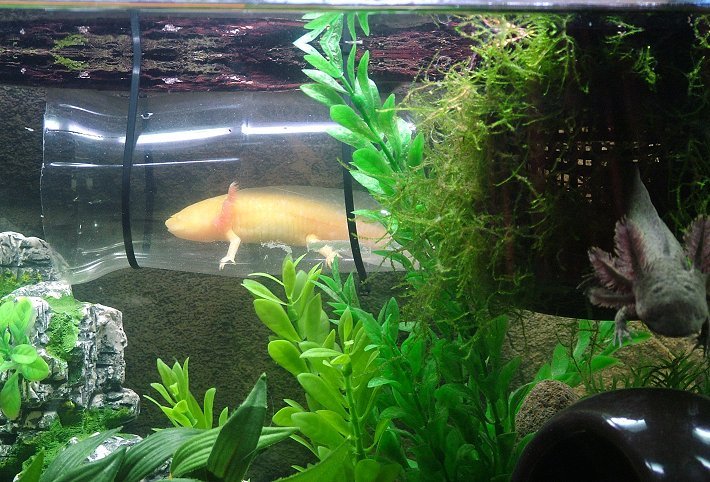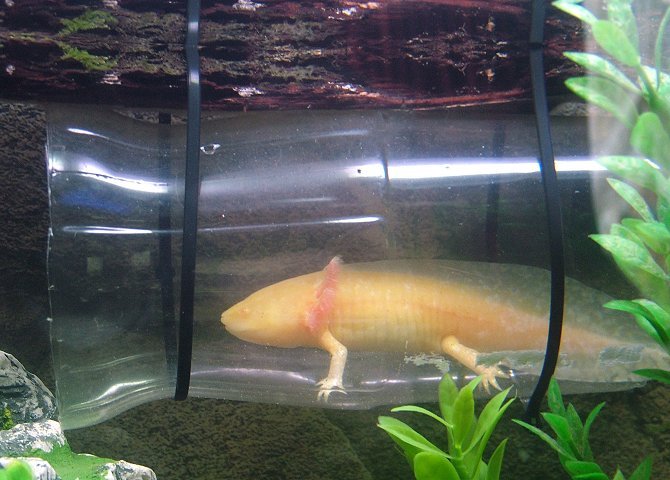10/06/2007
Photo Fun
Dragon Adores the floor water bottle tunnel,not just to swim through,but it's a great place to sleep on too.

Just look at this close up below,it seems water immersed levitation is an extremely comfortable way to sleep,anchored barely by a couple of toes on one back foot.

This picture shows how capable Axolotls mouths are of swallowing a sideways turned goldfish whole.

Dragon was actually yawning at the time,long photography sessions can be so boring to an Axolotl.
09/06/2007
*~*Meet the Babies*~*
Meet our *NEW* babies.I shall add more information about them as they grow.
Currently they are in a small tank just by themselves.
This below is "Chinatsu"-Pronounced "Chin-nah-t-su".
This below is "Chinatsu"-Pronounced "Chin-nah-t-su".
Japanese in orgin it means-" A thousand summers".Chinatsu is a wild type Axolotyl.
Like Dragon,but with eyes!!!.

And here we have "Kazumi"-Produced "Ka-zume-mee".Also Japanese in orgin it means "Harmonious beauty".Kazumi is a Leucistic Axolotl which means white with black eyes,and has grey freckles over the head and face.

I shall add more details and pictures as they grow.
Subscribe to:
Posts (Atom)
